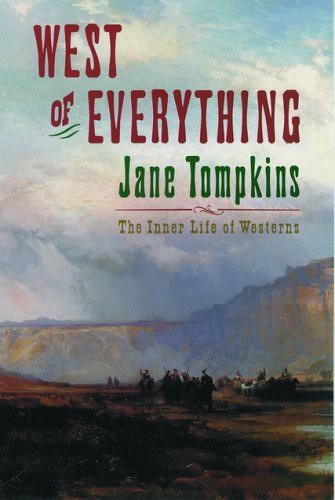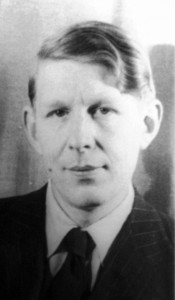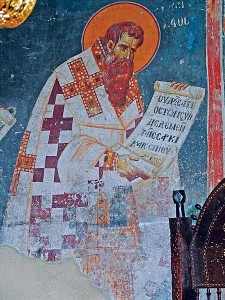
Two weeks ago, James Sire addressed a question from me about learning from artists and writers who have a different world view than my own. In his response, he mentioned Alan Jacobs’s A Theology of Reading, which I have been reading and blogging through lately. I’d like to expand a bit on Jim’s reference to Jacobs’s book with a few examples of charitable reading.
Throughout the book, Jacobs offers “interludes,” which are essentially case studies of different styles and methods of reading. “Interlude D: Two Charitable Readers” compares two different readers’ approaches to two different subjects which I think relates to the question of influence that I raised. Jacobs posits two different paths of reading charitably:
- Drawing closer to an author you find repellant, so that you can appreciate whatever value is to be found in their work.
- Distancing yourself from an author you love, so that you can assess their contributions more accurately, apart from your own adoration.
Drawing Closer
As an example of the first path, Jacobs offers Jane Tompkins’s essay about Buffalo Bill Cody in West of Everything: The Inner Lives of Westerns. The essay reflects on a visit to the Buffalo Bill Historical Center , which Tompkins finds emblematic of the violent, imperialistic impulses of 19th-century American culture, and she is outraged.
But the outrage was undermined by the knowledge that I knew nothing about Buffalo Bill, nothing of his life, nothing of the circumstances that led him to be involved in such violent events’So when I got home I began to read about Buffalo Bill, and a whole new world opened up. I came to love Buffalo Bill. (Tompkins, 195, quoted in Jacobs)
Tompkins’ love for Buffalo Bill, however, did not lead her to ignore his violence or his personification of a world view she detested.
[Tompkins] does not encourage us to love Buffalo Bill by diminishing or limiting her description of the evils with which he was associated’Tompkins’s charity consists in the wholeness of her attention, her refusal to sacrifice attention to one truth so that another one may be privileged’.Had Tompkins been more decisive, her essay perhaps would have been more coherent, but less charitable and less truthful. (Jacobs, 117-118)
Drawing Back

The second case —of a reader distancing himself from an author he loves —is that of W.H. Auden’s love for Søren Kierkegaard. Auden discovered Kierkegaard in the late 1930’s (in fact, Kierkegaard was one the principle influences on Auden’s decision to return to Christianity), and he became “utterly captivated,” as Jacobs puts it.
As Kierkegaard’s works appeared in English during the 1940s, Auden made a point of reviewing them for major American periodicals: It was his way of spreading the good news about this remarkable thinker’What is remarkable about this reviews, for our purposes here, is their expository nature: Auden seems to think it his duty simply to present Kierkegaard’s ideas with little comment or evaluation’[O]ne cannot help thinking of Bakhtin’s comment about the “purely passive, purely receptive” understanding of an author’s intentions that “contributes nothing new to the word under consideration, only mirroring it, seeking at its most ambitious, merely the full reproduction of that which is already given in the word” (Dialogic 281) and that therefore constitutes something of an ethical failure of engagement. (120-121)
In order for Auden to become a truly charitable reader of Kierkegaard, able to honestly assess the writer’s contributions to philosophy and literature rather than simply adoring him, Auden would have to move outside of Kierkegaard’s writings and see not only their greatness, but also their shortcomings. Jacobs notes that Auden was finally able to do this in 1968 (30 years after he first began reading Kierkegaard). Jacobs quotes several criticisms that Auden makes of Kierkegaard, then writes:
But having so strictly indicated Kierkegaard’s shortcomings —having distanced himself from Kierkegaard and established a Bakhtinian “outsidedness”—Auden then pivots his essay toward a renewed appreciation of Kierkegaard’Having registered the inadequacies of Kierkegaard’s thought, he is then free to turn to the Danish thinker’s distinctive contributions. (123)
This may sound a bit strange, but it’s important to observe that “reading charitably” doesn’t mean that one accepts an author or book uncritically.
One seeks to avoid error because one cannot love properly when confused or deceived. (Jacobs, 17)
Athens and Jerusalem

This brings us back to the question of learning from and appreciating authors who don’t share our world view. Jim Sire notes Augustine and Calvin as two Christian thinkers who think it’s acceptable to read and learn from “pagan” authors (and I would expand that category to include anyone from another world view). Jacobs turns to a different theologian: Basil the Great. In Basil’s time (the 4th century), Christianity had been made the official religion of the Roman empire, but the “institutions of culture” were still dominated by pagan literature. So, Christian students regularly faced the problem of being asked to master non-Christian literature and philosophy in school.
Basil, therefore, advises Christian students to learn the skills of discernment that will enable them to recognize when the pagan writers are teaching wisdom and virtue, so that they may eat such good fruit as is available. (141)
How are they to do this? By being charitable rather than overly critical.
It is precisely a less “scrupulous” and more equitable reading of the pagan writers that releases them for our use, gives them a role in our school of virtue. By reading them according to the charitable spirit rather than the harsh and inflexible letter, we make them our own. (142)
I ran into this problem shortly after I became a Christian. As an English major at a public university, I was still required to read “pagan” authors for my courses. It was extremely tempting to read them according to “the harsh and inflexible letter,” critiquing them for their theological and moral shortcomings rather than seeking to learn from them what I could. It took me a long time to be able to read, say, W.B. Yeats in a charitable spirit.
But how is a Christian student to discern “wisdom and virtue” if they are studying pagan literature?
’Basil, knowing that the schools are pagan, assumes that the students to whom he writes will be nurtured by the counter-institution of the Church; it is the sound teaching of the Church that provides the students with the resources necessary to reconfigure, properly and healthily, the ideological world of the pagan writers and teachers. (143, emphasis added)
Is the Church today providing sound teaching adequate to this task? That’s a big question—for another day.
The former Associate Director for the Emerging Scholars Network, Micheal lives in Cincinnati with his wife and three children and works as a web manager for a national storage and organization company. He writes about work, vocation, and finding meaning in what you do at No Small Actors.

Leave a Reply